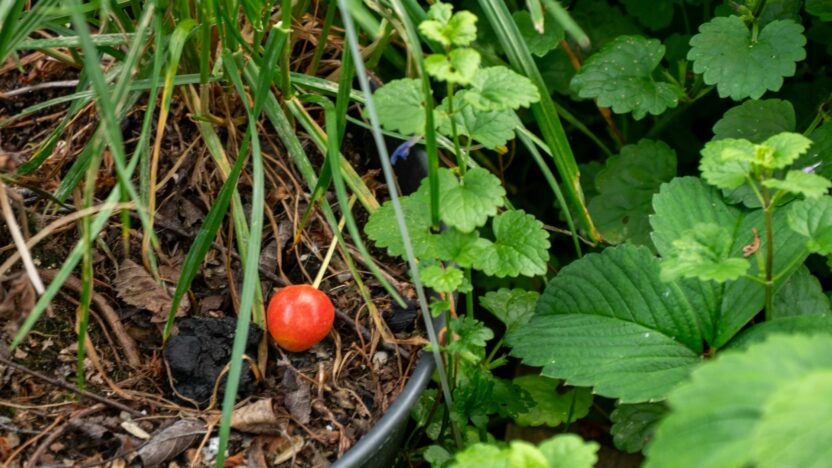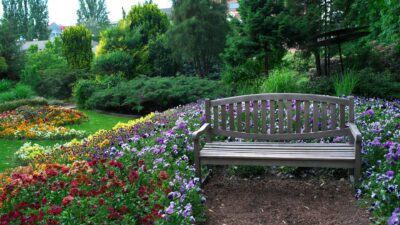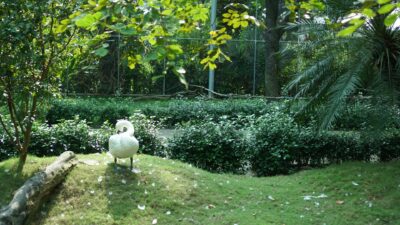Growing your own food is a rewarding experience, even if you only have a small space like a balcony, patio, or tiny backyard. Organic gardening in small areas allows you to enjoy fresh, chemical-free produce while supporting a healthier environment. With the right crops and techniques, you can maximize your harvest without needing a large plot. This guide shares the best organic crops for small gardens and tips to make the most of your space. For more organic gardening ideas, visit For Organic Life.
Top Crops for Limited Spaces
Choosing the right crops is key when space is tight. Some plants are naturally suited for small gardens because they grow well in containers, have high yields, or don’t need much room. Here are some top picks for beginners:
- Tomatoes: Cherry or dwarf varieties, like ‘Tiny Tim,’ thrive in pots and produce abundantly. They need at least six hours of sun and a trellis for support.
- Peppers: Both sweet and hot peppers grow well in containers. Compact varieties like ‘Lunchbox’ peppers are perfect for small spaces.
- Herbs: Basil, cilantro, and chives are easy to grow in pots or window boxes. They take up little space and can be harvested repeatedly.
- Lettuce: Leaf lettuce varieties, like ‘Black Seeded Simpson,’ grow quickly and can be cut multiple times for continuous harvests.
- Radishes: These fast-growing root vegetables are ready in 3–4 weeks and work well in shallow containers.
When selecting crops, consider your climate. Check your region’s growing season to ensure your plants will thrive. For example, cool-season crops like lettuce do well in spring or fall, while tomatoes and peppers love summer heat. Always choose certified organic seeds or seedlings to keep your garden chemical-free.
Maximizing Space with Vertical Gardening
Small gardens require creative use of space, and vertical gardening is a game-changer. By growing plants upward, you can fit more crops into a limited area. Vertical gardening works well for vining or climbing plants and can add beauty to your space.
Start with simple structures like trellises, stakes, or wall-mounted planters. For example, grow pole beans or cucumbers on a trellis to save ground space. Herbs like thyme or oregano can thrive in vertical pocket planters hung on a wall. If you’re short on floor space, stack pots or use hanging baskets for strawberries or trailing herbs.
Ensure your vertical setups get enough sunlight and are sturdy enough to support plant weight. Watering can be trickier with vertical gardens, so check soil moisture regularly. A drip irrigation system or self-watering pots can make maintenance easier. Vertical gardening not only boosts your yield but also keeps your garden tidy and accessible.
Preparing Soil for High-Yield Crops
Healthy soil is the foundation of a productive organic garden. In small spaces, where every inch counts, rich soil ensures your plants grow strong and produce more. Start by choosing a high-quality organic potting mix for containers or raised beds. Look for mixes labeled “organic” to avoid synthetic chemicals.
If you’re planting in the ground, test your soil’s pH with a kit from a garden center. Most crops prefer a pH between 6.0 and 7.0. Add organic compost or well-rotted manure to improve soil structure and add nutrients. For containers, mix in 20–30% compost with your potting soil to boost fertility.
Aeration is also important, especially in small spaces where soil can compact. Use a hand trowel to loosen soil in pots or beds before planting. Refresh soil between growing seasons by adding more compost. Healthy soil leads to healthier plants, which means bigger harvests in your small garden.
Companion Planting for Better Growth
Companion planting is an organic gardening technique where certain plants are grown together to benefit each other. In small gardens, this method saves space and improves plant health. For example, planting marigolds near tomatoes can repel pests like aphids. Basil grown near peppers enhances their flavor and deters insects.
Some great companion planting combinations for small gardens include:
- Lettuce and chives: Chives repel pests that attack lettuce.
- Tomatoes and carrots: Carrots loosen soil, helping tomato roots grow deeper.
- Cucumbers and dill: Dill attracts beneficial insects that protect cucumbers.
Avoid planting incompatible crops together, like tomatoes and potatoes, which can share diseases. Research companion planting charts to plan your layout. This technique maximizes space and reduces the need for pest control, keeping your garden organic and thriving.
Harvesting and Replanting for Continuous Yield
To keep your small garden productive, harvest regularly and replant as needed. For crops like lettuce and herbs, use the “cut-and-come-again” method—snip outer leaves and let the plant regrow. Radishes and other fast-growing crops can be replanted every few weeks for a steady supply.
When harvesting, use clean scissors or pruners to avoid damaging plants. For tomatoes and peppers, pick fruit when it’s ripe to encourage more growth. Store harvested produce properly—leafy greens in the fridge, root crops in a cool, dark place—to maintain freshness.
After harvesting, replenish soil with compost before replanting. In small spaces, succession planting (replanting as soon as one crop is done) keeps your garden active. For example, follow radishes with lettuce or herbs in the same pot. Check planting calendars to time your crops for your climate.
Growing Forward with Your Small Garden
Small-space organic gardening is a fun and sustainable way to grow your own food. By choosing the right crops, using vertical techniques, preparing soil, practicing companion planting, and replanting strategically, you can enjoy a bountiful harvest no matter your space limitations. Experiment with different plants and layouts to find what works best for you. For more tips on organic gardening, check out For Organic Life. Start small, stay patient, and watch your garden flourish!




